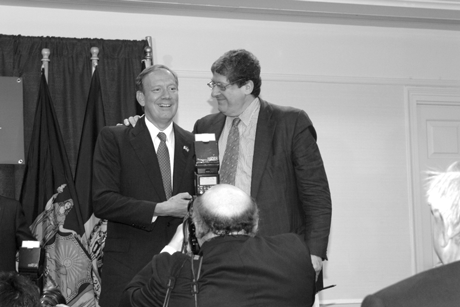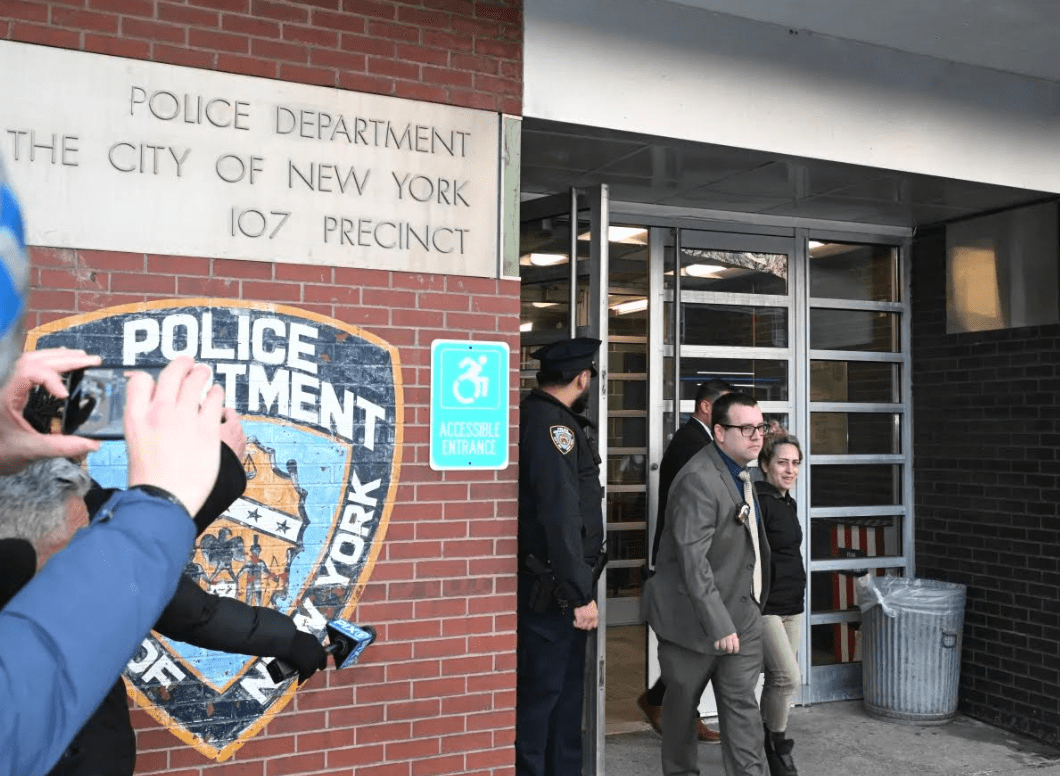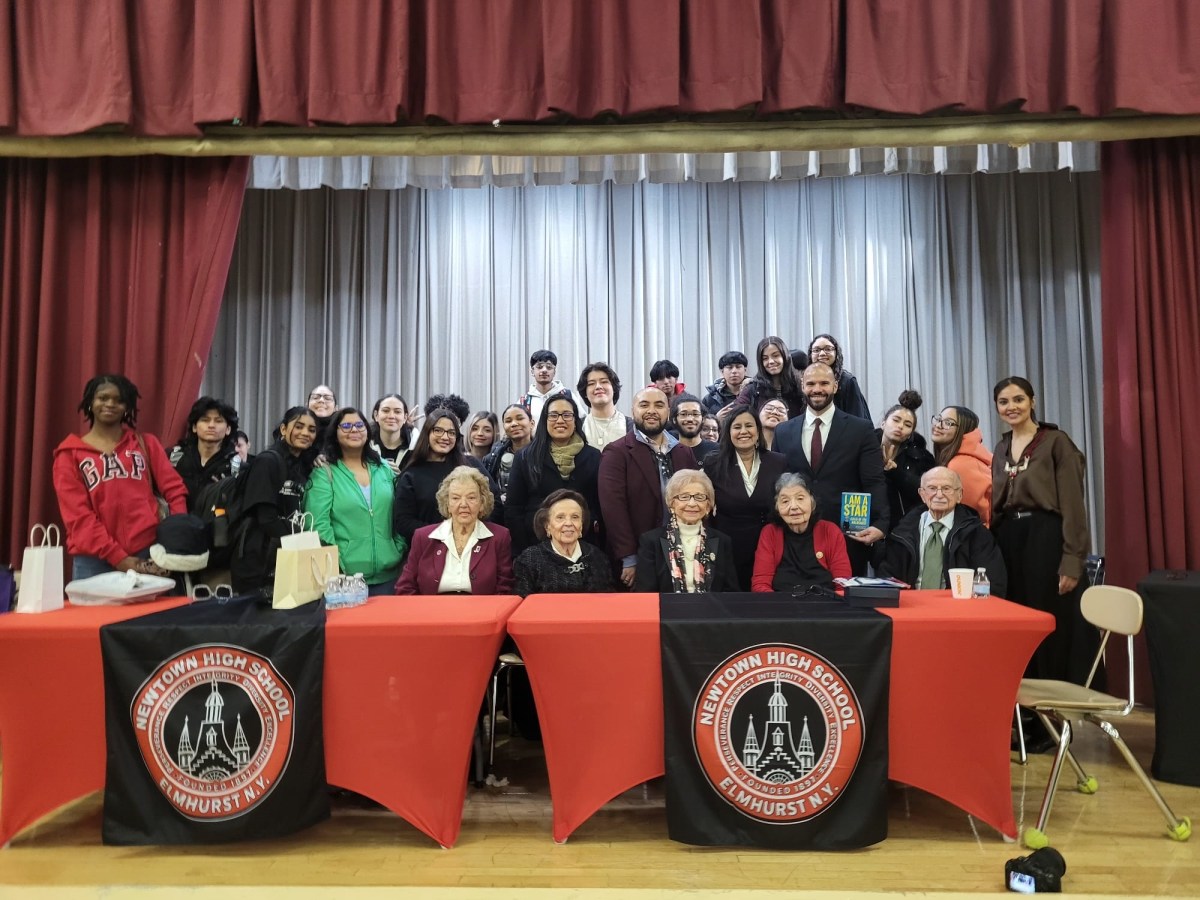By Josh Rogers
Mayor Mike Bloomberg said last week it is “perfectly appropriate” to use money intended to help New York recover from the attack on the World Trade Center to construct offices in Midtown. Gov. George Pataki pledged to help the mayor achieve his goals.
Bloomberg said economic development projects in Midtown create jobs for people living in Lower Manhattan and all over the city so it makes sense to use some of the $8 billion in tax-free Liberty Bonds to convince developers to build in Midtown. Some firms only want to be in mid-Manhattan, Bloomberg said.
“They want to come to Midtown…” the mayor said at a press conference last Wednesday. “I think it’s perfectly appropriate to use Liberty Bonds.”
The mayor’s remarks were made at the Maiden La. Office of Cadwalader Wickersham & Taft, after he and the governor thanked the law firm for agreeing to stay in Lower Manhattan by moving to a 450,000 square-foot space at One World Financial Center.
Downtown business leaders and politicians have argued that since the tax-free program was intended to help Lower Manhattan, the bonds should not support projects in Midtown. John Whitehead, chairperson of the Lower Manhattan Development Corp., has made the same criticism, but Pataki, who appointed Whitehead, said he is inclined to support the mayor.
“If the mayor has projects he thinks are important to economic development in New York City, we want to work with him,” Pataki said.
The city is considering approving bond applications by Forest City Ratner to build an office that will include the headquarters for The New York Times in the paper’s namesake area, Times Square, and from the Durst Organization to build an office for Bank of America at One Bryant Park.
The $8 billion in bonds can be used for residential and commercial development in Lower Manhattan and up to $2 billion can be used for commercial projects in other parts of the city. New York’s senators, Chuck Schumer and Hillary Clinton, led the fight to pass the bond legislation as part of the $21.4 billion in federal money slated to help Downtown recover from 9/11. If all of the bonds are used, it will cost the federal government an estimated $1.2 billion in lost tax revenue. Downtown advocates have been debating whether it would be better to shift some of the $1.2 billion to other Lower Manhattan projects if all of the bond money is not used, or to extend next year’s deadline to allow more time for commercial development.
At last week’s announcement, Bloomberg noted that Cadwalader was founded in Lower Manhattan in 1792 and its longevity was proof that the firm knows what it is doing by staying Downtown.
Cadwalader plans to move to the Financial Center building next year and will receive $4.3 million for keeping the equivalent of 757 fulltime workers in Lower Manhattan for 15 years, and $1 million worth of discounted energy costs. Robert O. Link, Jr., the firm’s chairperson, said he expects the firm to add 400 workers in which case the firm would receive an extra $3.4 million in incentives.
Bloomberg said: “You can’t leave New York if intellectual content is an important part of your business. This is where it’s at.”
The firm was founded in 1792 by John Wells, an orphan from Upstate New York, according to the firm’s official history. Wells began one of the country’s first law partnerships in 1818 when he joined with George Washington Strong. They specialized in maritime law, commercial claims, and litigation. Through the 19th century, the firm had offices at 68 Wall St. and then later at 43 Wall and 40 Wall. In 1878, John L. Cadwalader, a former assistant Secretary of State, joined the firm. George W. Wickersham, a former U.S. Attorney General, joined Cadwalader in 1883. Henry W. Taft came on in 1889 and the firm took its current name in 1914. Cadwalader’s Catherine Noyes Lee became one of Wall St.’s first female law partners in 1942. The firm moved to its current location at 100 Maiden La. in 1985.
As a young law graduate, George Pataki interviewed with Cadwalader, but he joked that he joined Dewey Ballantine instead because of its superior basketball team. He spied Peter Bergmann, a Cadwalader partner, in the front row. Pataki said of Bergmann, perhaps the only man in the room taller than the governor: “I had to guard him year in and year out.” Walking into the building, Pataki said he saw “a lot of softball trophies, but there was only one basketball trophy and that was after I left Dewey.”
Josh@DowntownExpress.com


































